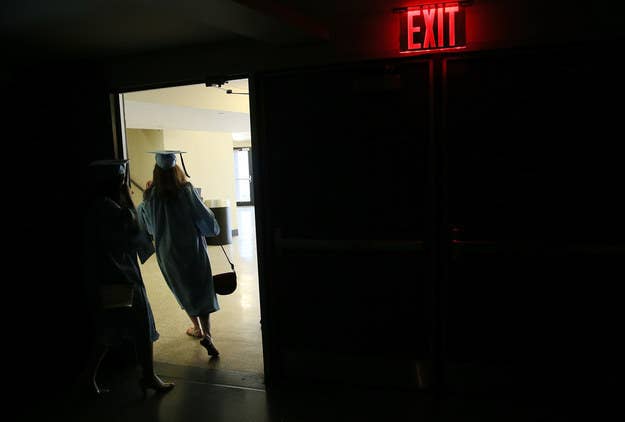
In the pursuit of prestige, revenue, and rankings, more public universities have turned to dangling merit-based scholarships to attract more out-of-state students, according to a report by the New America Foundation released earlier this week. The result: shortchanging both poor students, who are less likely to receive such aid, and students in the states the universities are funded to serve.
Public colleges once devoted the biggest chunk of their financial aid money, some 34%, to students in the bottom income quartile, giving just 16% to the wealthiest students, the report says. That has now shifted dramatically: Financial aid at public colleges now goes equally to the top and bottom quartile of students, with wealthy students receiving 23% of financial aid. The poorest students now receive only 25%.
The push toward funneling aid to privileged out-of-state students reflects a change in the nature of public higher education. "By bringing in more and more wealthy nonresident students, these colleges are increasingly becoming bastions of privilege," the report says.
Schools that provide merit aid, it found, tend to enroll far more students from out of state, who typically pick up more merit-based scholarships than in-state students. They also tend to enroll fewer poor students — and charge those poor students more money.
A separate report this week by the left-leaning think tank Demos suggests that black students may also be disproportionately impacted by such policies.
At public colleges, more than any other schools, the rising tide of student debt has disproportionately burdened students of color, the report said. The gap between black and white student borrowing at four-year public schools is more pronounced than at private and for-profit schools. An estimated 81% of black students at public colleges borrow for their bachelor's degrees, compared to 63% of white students, a gap of 18 percentage points. At private universities, that gap is 12 percentage points.
"The decrease in need-based aid almost certainly has a big part to play" in that gap, said Mark Huelsman, the Demos study's author.
Last year, a study by professors at the Universities of Arizona, Michigan, and Missouri found schools that boosted enrollment of out-of-state students saw their percentage of minority students stagnate or decline.
Public colleges have a lot to gain from offering merit aid to boost the number of out-of-state students they enroll. Out-of-state students pay higher tuition, increasing revenues; they also tend to have higher test scores and grades, which can boost colleges' rankings and prestige.
"Providing four $5,000 scholarships to otherwise 'full-pay' students is much more lucrative for schools than spending $20,000 on one low-income student," the New America report says.
The push for out-of-state students and merit aid spans all different public colleges, the report found, from large research universities that want to compete with prestigious private schools to smaller regional colleges that feel the need to bring in out-of-state students to stay afloat financially.
Many of the country's biggest public universities are among those funneling merit aid to students without need, according to the New America report. Arizona State University, Auburn University, Ohio State University, and dozens of others all give aid money to more than a quarter of students who have no financial need.
At the University of South Carolina, almost 40% of students with no need receive an average of $5,200 in aid. The percentage of USC students who come from out of state has grown to 45%, a 23-point increase from 2000.
